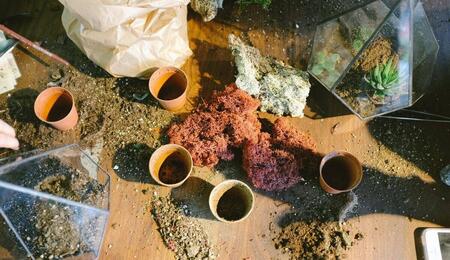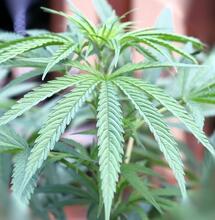Airpots - Something New for Soil Growers

Over the last few years, many home growers have tried growing in one of the various hydro techniques as a way of boosting plant size, growth rate and yields. Hydro systems in general offer rapid growth rates.
The root system in hydro can develop quickly, and a good root system is the basis for a healthy plant. Techniques such as deep water culture ('DWC') are currently regarded as perhaps the fastest way to grow large plants, and some of the best AutoFem growers have used this to tremendous advantage. Given the short, 70-day lifespan of AutoFems, those who can engineer small advantages at the start of the plant growth cycle can often reap very generous rewards at harvest time.
Hydro may be fast but it isn't the simplest; it comes with its own complexities, which put a lot of people off of hydro. A good hydro grower checks his pH and electrical conductivity (EC) of the feed solution on a daily basis. Everything must be checked, and instruments calibrated on a regular basis. For some growers, the demands of growing in hydroponic systems are a bit too much and detract from the pleasure of growing. Growing in coco fiber has often been seen as a way of simplifying matters. For many, coco is simpler than hydro – yet faster than soil.
Soil Remains Perhaps the Simplest Way of Growing
Soil growers will often say it produces the sweetest tasting Cannabis and claim it is the most natural and organic way to grow man's favorite herb. In its simplest form, soil growing needs little attention from the grower – apart from some extra nutrition during bloom, perhaps. In large enough buckets, the plant will need little supplemental feeding and will survive with simple occasional watering, until later in the grow.
It is especially pleasing to see soil growers presented with new methods that can boost performance, and reassure them that soil remains a first-class method in which to grow their stash. In recent months, Dutch Passion have seen a number of growers report great results with the new airpot containers, which are becoming widely available. Airpots are an adaptation of the basic plant pot design, which has changed very little in centuries. The basic principle of an airpot is to allow better aeration within the soil. The numerous holes around the sides of the airpot allow oxygen into the root system.
The roots develop evenly and quickly – this encourages a healthier root system. Airpots allow the roots of the plant to spread evenly throughout the soil/perlite mix, instead of bunching and circling around the bottom of the plant pot. With normal plant pots growers may see roots clinging to the sides and bottom, but airpots discourage this with the dimpled edge to the pot, which direct roots back into the center.
It's a clever and simple adaptation to the time-honored plant pot design, and it has gotten a lot of soil growers giving them a try – and a lot of users are highly satisfied with the airpots. The root systems look great, the soil is used more efficiently, and airpot growers say their plants get more nutrition from the same volume of soil. This allows them to grow bigger plants with better blooms. The fact that so many airpot users switch permanently to them is always a sign that the technology is a good one, and not a transitory fashion.
It's a simple principle and a surprise that it has not been tried before: air is allowed to permeate the soil and create a healthier root zone. However, roots can escape through the holes in the sides of the airpots, and if they do they are simply trimmed with scissors, or 'air pruned'. This encourages further root branching within the airpot.
The only problem with airpots is the tendency for water to escape out of the side holes if it is poured too quickly. But, apart from that, we hear few complaints about them. Many soil growers say they are worth the little bit of extra hassle and would not switch back to normal plant pots after using them.
It's nice to see the soil growers get their share of new ideas for a change. May there be many more.
Also read on Soft Secrets:
- Organic VS Hydroponics - What Is The Difference?
- Different Ways of Growing: Outdoors vs. Indoors, Soil vs. Hydroponics vs. Aquaponics











